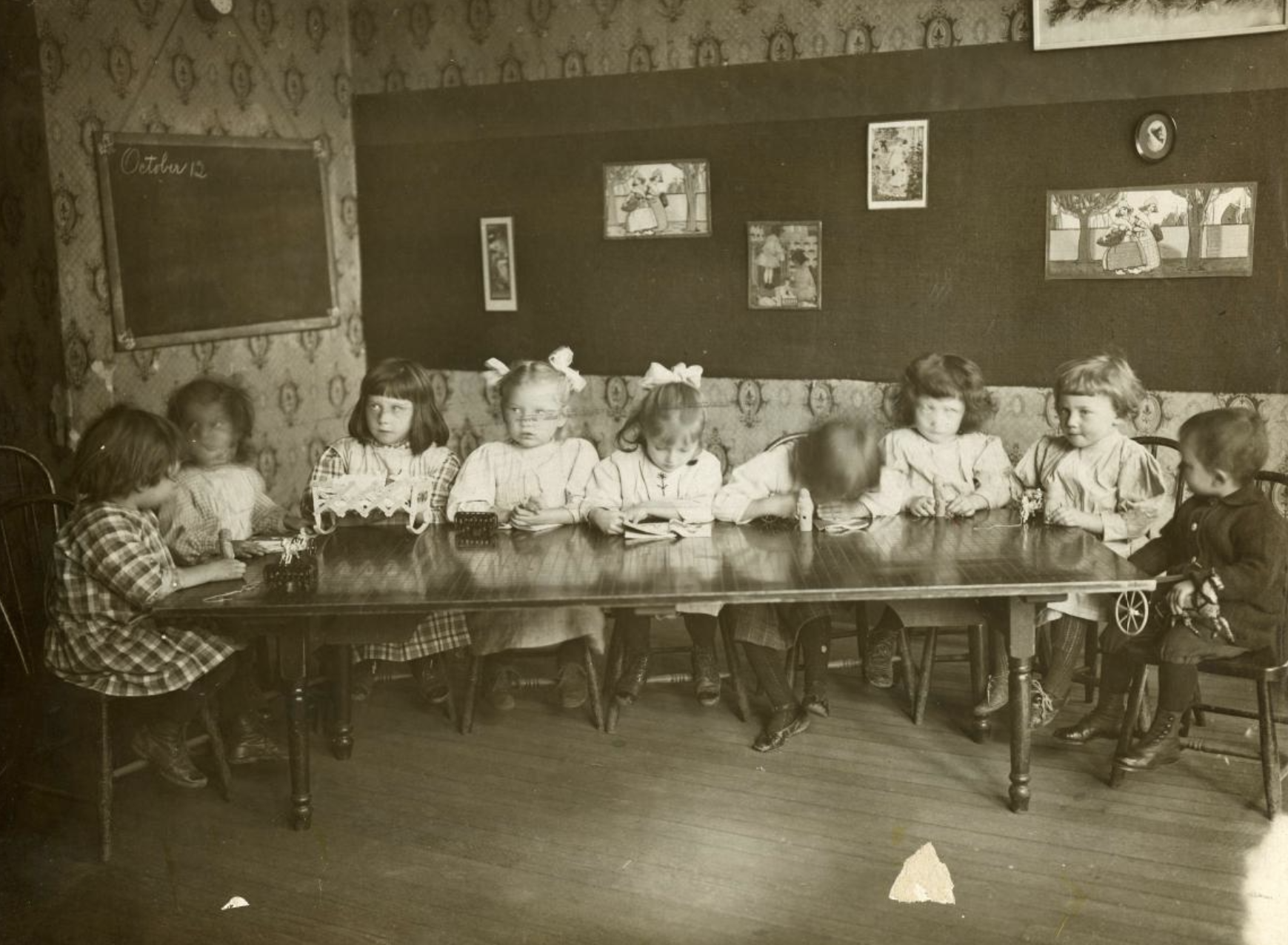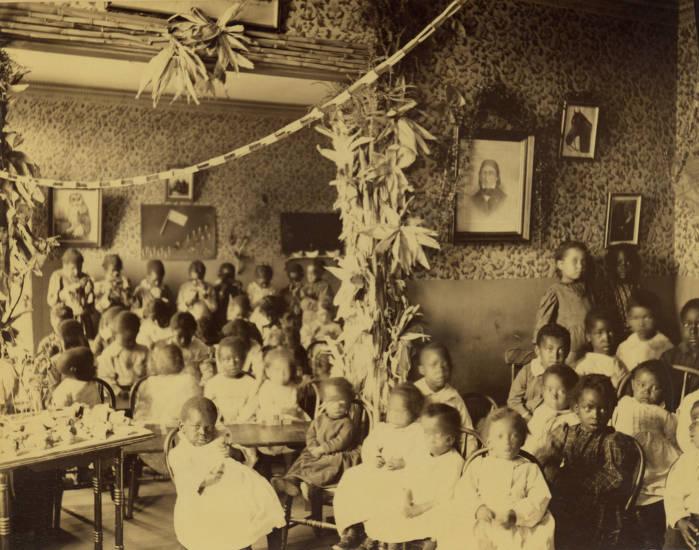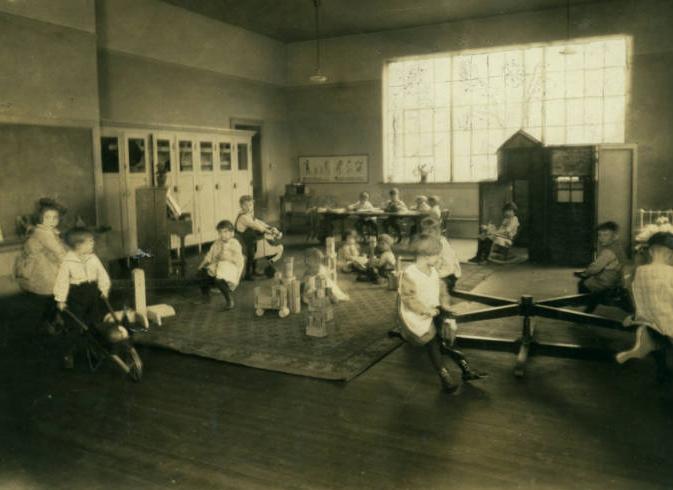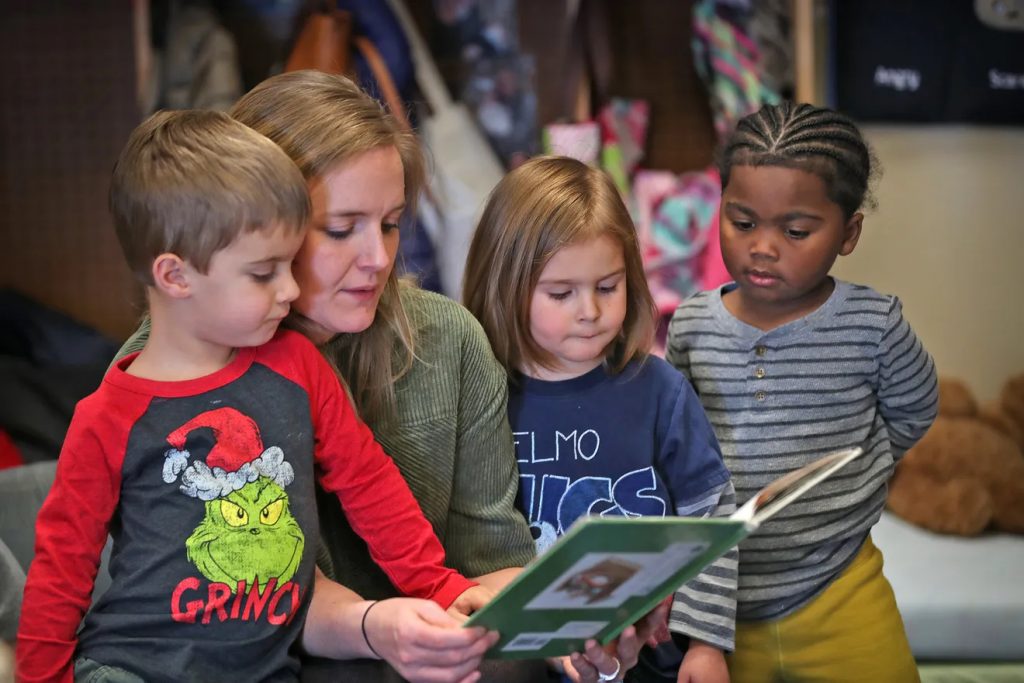Early childhood education programs provide children between ages zero and eight (Infancy through 3rd grade) with planned experiences that encourage emotional, social, intellectual, and physical development.

In Indianapolis, several types of programs are available for preschool-aged children. Early childhood programs generally accept three-and four-year-olds into full and half-day programs, which balance age-appropriate instructional activities with unstructured periods of play. Early child care centers and day nurseries operate for the benefit of parents who need longer care for their children, while they work or attend school. Generally, child care services are offered 10 to 12 hours per day, 5 days a week, 12 months a year. programs may serve three-, four-, and five-year-old children of low-income families, providing educational experiences as well as health and social services.
Kindergartens are usually attached to public schools, are instructionally oriented, and serve children five years old and older. Historically, kindergarten was the first form of early childhood education to arrive in Indianapolis. Interest in the education of preschool-aged children was spread across Europe in the late 18th and early 19th centuries by individuals such as Robert Owen (a Scottish industrialist who eventually founded the first nursery school in the United States at New Harmony, Indiana, in 1826), Johann Pestalozzi, and Jean-Jacques Rousseau. These early efforts at preschool education were usually directed toward poor and working-class children.

But it was Friedrich Froebel who earned the epithet “Father of the Kindergarten” for the school he established in Blakenburgh, Germany, in 1837 for four-to six-year-old children of middle-class parents. Froebel believed that, given a well-ordered environment, children should grow according to their own nature and potential, as do animals and plants—thus the metaphoric name, meaning “child’s garden.” Froebel’s model was brought to the United States by German immigrants, who opened the first kindergarten in the United States in 1856.
As early as 1834, a teacher named Miss Sargent was operating a school for young children in the basement of the Governor’s Mansion in Indianapolis. Both locally and nationally, interest in kindergarten increased because of the perceived neglect of preschool-aged poor and immigrant children. Churches and other charitable organizations viewed kindergartens as a way to provide much-needed educational and social services to these children.

In 1881, , pastor of the , organized a free kindergarten, which was housed in the corridor of P.S. 12 during the summer and in the nearby mission church in the fall and winter. Lois G. Hufford was the first teacher. The following year, McCulloch and others established the Indianapolis Free Kindergarten Society. Its first director was , who became Indianapolis’ foremost crusader for early childhood education. Blaker also established the Indiana Kindergarten and Primary Normal Training School, which eventually became part of the teacher education program of .
In March 1889, the Indiana General Assembly approved an act for the establishment of kindergartens for all children aged four to six in the incorporated towns and cities of the state. By the next year, 17 kindergartens, funded and maintained by the Indianapolis Free Kindergarten Society, were operating in the city. Then, in 1901, the General Assembly passed an act that allowed part of the money for kindergartens to be raised through taxation, making Indiana one of the first states to appropriate public money for the maintenance of kindergartens. Over the next decade, the number of free kindergartens in Indianapolis grew, hitting a high of 60 in 1914.
Up to this point, kindergartens had been enthusiastically endorsed by urban school leaders, but disaffection and decline soon began. Not only were kindergartens costly, but educators and kindergartners disagreed over whether kindergarten should be child-centered and developmental, as Froebel had envisioned it, or instructional and modificational, as such American educators as John Dewey and Edward Thorndike proposed.
For Indianapolis, this debate effectively ended in 1949 when the incorporated free kindergartens into the public school system, thereby determining that kindergartens would be instructional and modificational in approach. Charitable organizations interested in the well-being of children helped bring other childhood education programs to the city. Established in 1901, the Day Nursery Association of Indianapolis (renamed in 2014) provided daycare to indigent children. Settlement houses offered educational programs for preschool-aged children of immigrants since early childhood education was viewed as an important part of the process.

During the 1920s, for example, students from the local teachers college provided half-day programs in the Kingan Hill Settlement District. Children were instructed in saluting the flag, singing patriotic songs, and such “American” skills as bed making, table setting, and laundry sorting. Federal involvement in early childhood education in Indiana dates to the mid-1930s when the Works Projects Administration operated day nurseries for children ages two through six.
With the expiration of the WPA legislation, the program was largely dismantled but was resurrected in 1941 with the passage of the federal Lanham Act. Women entering the labor force needed care for their children, and in 1942 the Children’s Division of the Indiana Department of Welfare published standards for day nurseries. These guidelines—some using the verb “must,” but most using the verb “should”—mirrored an ongoing tension in federal involvement in early childhood programs, between quality, developmental child care, and low-cost, welfare-based child care.
The end of World War II and the accompanying push for women to withdraw from the workforce brought an end to federal funding for child care programs until the 1960s and the Johnson Administration’s War on Poverty.
The Head Start program for disadvantaged preschool children was authorized by the Economic Opportunity Act of 1964. Planners hoped that Head Start, in addition to providing early education for poor children, might stimulate community action by bringing parents together, help coordinate services to children and their families, better the life chances of disadvantaged youth, and even bring about school reform by encouraging schools to deal seriously with the needs of poor children.
In Indianapolis, Head Start began as a summer program in 1965, and initially served over 1,000 five and six-year-olds. It was extended to include three-and four-year-olds through the Indianapolis Pre-School Centers, which were also funded by the Office of Economic Opportunity.
Over the last several decades, early childhood education programs have expanded and multiplied in Indianapolis. Free, half-day kindergartens are available throughout the city, although free transportation is not provided. Programs are offered through both the public and private sectors and include nursery schools, cooperative early childhood centers, day nurseries, Head Start, Montessori programs, and special programs that offer services to meet special needs, such as physical or mental handicaps and giftedness.

More recently, President George W. Bush’s educational goals for the year 2000 again focused national attention on early childhood education. This is consistent with the historical pattern of federal interest in this issue in times of perceived national crisis.
In order to “ensure that every child starts school ready to learn,” Governor Evan Bayh proposed the Step Ahead plan, which he hoped to make available to all Indiana four-year-olds by 1995 to provide year-round, full-day instruction on a voluntary basis. The Indiana Association for the Education of Young Children and the Early Learning Indiana are two local organizations concerned with the quality of early childhood education programs. Both publish guidelines for parents seeking appropriate programs for their children.
Early Learning Indiana found that Indianapolis lacked sufficient daycare for working parents’ children under the age of two. The Indiana Youth Institute, founded ca. 1989, reported that children growing up in poverty are significantly more likely to experience stress and deprivation that hinders development and school readiness, health, and other outcomes. Indiana’s child poverty rates decreased, with 19.5 percent of Hoosier children living in poverty as of 2016, down from 20.9 percent in 2015.

Help improve this entry
Contribute information, offer corrections, suggest images.
You can also recommend new entries related to this topic.